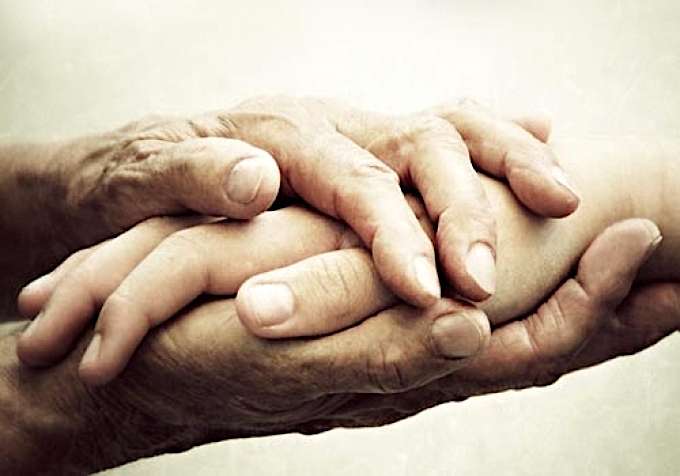
There is a classical teaching from the Buddha on the Five Hindrances* that also provides instruction on how to overcome our own hindrances.
I was overjoyed when I found the Buddha’s teachings on the Five Hindrances because they also provide ways to overcome them. Hindrances can be thought of as obstacles to stillness, ease, and insight in sitting meditation practice, but I find that they apply just as easily to our daily difficulties. Who doesn’t want a clear instruction manual on overcoming difficulties? I thought I’d found a short cut to happiness, but as the years of practice go on, I’ve found that the way I approach my hindrances, on and off the cushion, is even more important than having the right technique to overcome them.
Curing versus caring
In a recent talk by Ajahn Brahm at the opening of the 10th Global Conference on Buddhism,** he used the phrase “curing versus caring” to highlight the ways we approach meditation practice. He gave the example of a doctor who focuses only on curing a patient, which can actually hinder the intended result, whereas focusing on caring for the patient is always possible and it establishes a relationship that is the ground for true healing, whether the patient is cured or not. So too in our meditation practice, we often want to fix ourselves and go straight to the relief from suffering. But when we focus on curing ourselves, we can easily miss the mark because trying to fix ourselves implies that we we’re resisting what we think is wrong with ourselves. When fixing or resisting, we’re not present enough to really know what’s going on. We need to take the time to first sit in the discomfort, to understand and soothe it rather than just trying to make it go away. But without understanding the roots of what blocks clarity, well-being, and ease, we’re likely to misdiagnose our situation and actually perpetuate our symptoms.
This is why caring, or being present with kindness, is an essential component in transforming our hindrances.
When I started my sitting meditation practice, I used the technique of silently noting whatever arose into awareness—an itch, a thought, a breath, heat, pain, breath, breath. . . . This brought more clarity about what was happening in my experience that had previously been drowned out by incessant thinking. It took me about five years to realize that the noting was usually followed by an instinctive pushing away of anything unpleasant. I just couldn’t recognize it until one day when I was practicing at Plum Village on retreat and Thich Nhat Hanh instructed us, as he often does, to embrace our strong emotions like a mother holds a crying child. There was a lot of sadness present in me and when I noted it, and I noticed something else—a pushing away. I then understood that I wasn’t actually embracing my sadness at all! I just took a pause before I pushed it away. Fortunately, this clarity allowed me to learn to actually embrace the sadness with an open, gentle attitude, staying present with the physical sensations of the emotion. This was a tremendous turning point in my practice that I’m still learning to develop.
I appreciated Ajahn Brahm’s “curing versus caring” because it’s helpful to know both what is unskillful and skillful in practice. Our minds are rarely clear and our habit energies are strong. In the face of a hindrance—meaning here anything that blocks clarity, peace, well-being, joy—this simple question, “Is this curing or caring?” can illuminate the attitude of one’s practice.
Another way to do this is to simply ask, “Am I trying to fix it?” If the answer is “yes” then it’s time to come back to kindness, compassion, and curiosity. This creates the space needed to respond rather than react. The internal attitude of caring then translates easily into our external behaviors, especially difficult interactions with others. The other person knows when I’m trying to “fix” them and even the kindest words go nowhere. But if I care for the relationship first, which includes my emotions and those of all parties involved, I find that understanding and resolution come much more easily.
If you get drowsy in sitting meditation, do you then find yourself feeling annoyed and thinking about what can make the drowsiness go away, or do you bring an open curiosity to the drowsiness and look to see what it has to tell you? When your mind is agitated, do you scold yourself and wish that you could just find some quiet, or do you smile to the agitation and continue to observe it? Can you care for your hindrances? This is the heart of the matter.
The way out is in
An attitude of caring does not mean that we remain passive in the face of difficulties and injustice. It does, however, require that we check our attitude and intention before taking action. Reacting is usually from a fear of feeling pain, but feeling the pain is usually less unpleasant than the energy required to avoid the pain. When we react, we rarely find the results we want. This why the relationship comes first.
In my community we often say, “The way out is in.” Others might say, “What you resist persists.” Anything that we avoid is bound to get stronger. So the way out of a hindrance like agitation is by going into it—going into the physical sensations by allowing it to be there. If we jump to curing before caring, we can’t get to the cure.
Now take some time to reflect: what hindrances come up regularly in your daily life? How do you habitually respond to them? Do you push them away? Do you see them a little and then push away? Do you try to fix them, deny them, or drown in them? Or do you allow them to be present, welcome them, and learn from them? Have you ever gone in to get out?
Think of one difficult situation in your life. What might it feel like to greet this difficulty with care? How might it feel in the body? What kind of self-talk would arise? If the difficulty involves another person, what words would be spoken? Give yourself a few minutes to imagine in detail the response you’d like to be able to have, with no self-critique or blame toward your current habits. I usually start by letting the body relax. Some teachers also speak of “leaning in” because we usually lean away from our difficulties. Even imagining a new response can start to rewire the neural networks of habit and response. This is the beginning of going in, of caring, of embracing, and it can be a transformational practice. But don’t take my word for it. Try it for yourself and see.
* The Five Hindrances are:
Kamacchanda – sensory desire
Vyapada – ill will
Thin-Middha – sloth and torpor
Uddhacca-Kukkucca – restlessness and remorse
Vicikiccha – doubt
For more on traditional ways to practice with the hindrances in meditation practice, please see Ajahn Brahm’s teaching at BuddhaSasana.
** 10GCB – Ajahn Brahm – Mindfulness, Bliss, and Beyond – June 16, 2017 (YouTube)
Related features from Buddhistdoor Global
Gladden the Mind: Four Ways to Practice with Negative Thinking
The Wild Geese of Buddha and Christ
Buddhistdoor View: Cultivating Non-Attachment in the Midst of Pressured Living










